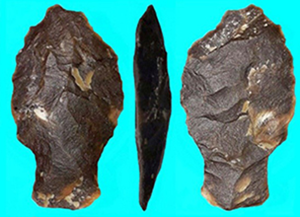Article contents
Fell points from Merín Lagoon, Uruguay: new data and their relevance to the peopling of south-eastern South America
Published online by Cambridge University Press: 01 June 2022
Abstract

The dating and routes by which humans colonised South America continue to be debated. Recent research in Uruguay has yielded new Palaeoindian lithic finds from the southern shores of the coastal Merín Lagoon. The author's analysis of a group of Fell points—comparable to other regional examples—shows that this widespread artefact was produced using locally available materials and that they were repeatedly resharpened and repaired until no longer functional. The finds from the Merín Lagoon permit consideration of changing sea levels and their influence on colonisation routes, resource exploitation and archaeological preservation. The Atlantic coastline may have been one possible route of entry for early colonisers of South America.
Information
- Type
- Research Article
- Information
- Copyright
- Copyright © The Author(s), 2022. Published by Cambridge University Press on behalf of Antiquity Publications Ltd.
References
- 2
- Cited by

